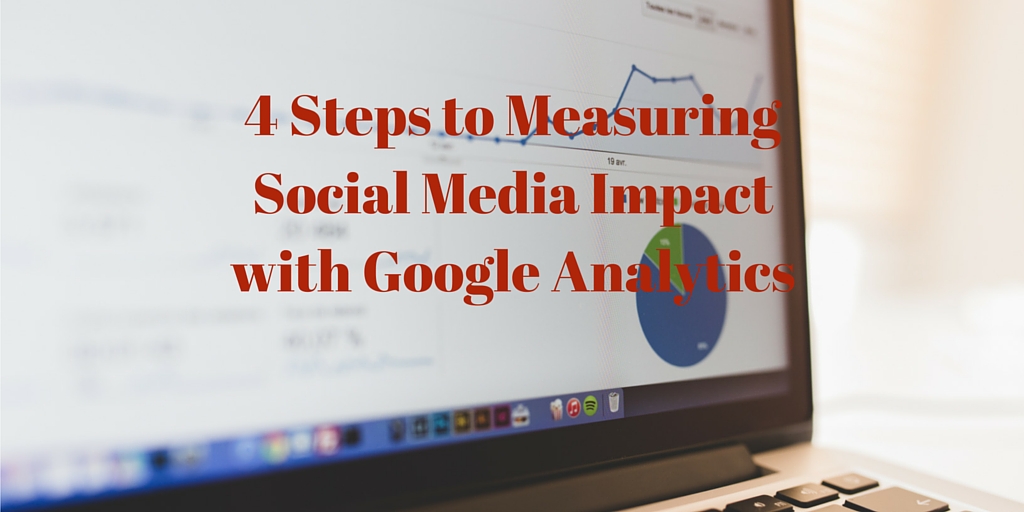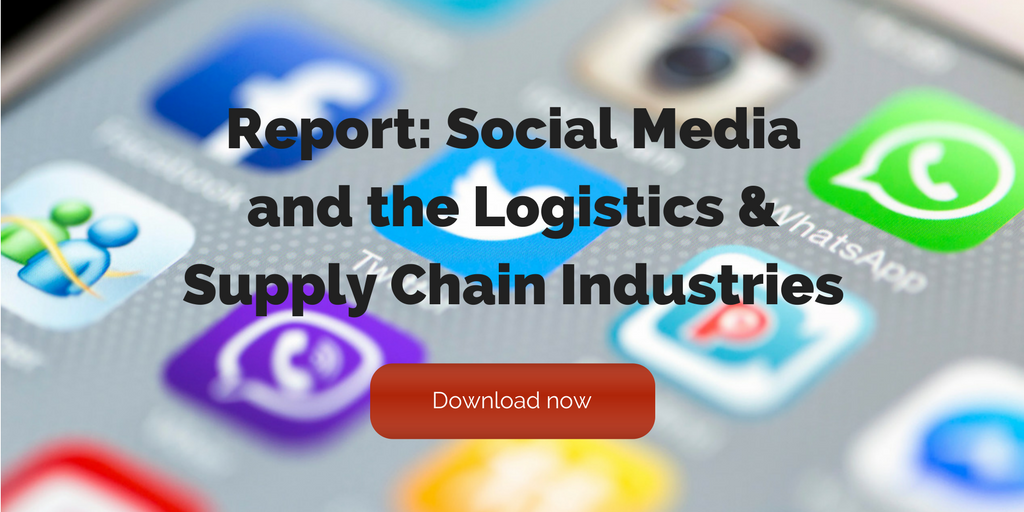
by Fronetics | Jul 5, 2016 | Blog, Data/Analytics, Marketing, Social Media, Strategy

Gauge the effectiveness of your social media strategy using these four data points in Google Analytics.
Measuring the impact social media has on business is important to those in the logistics and supply chain industries. In fact, a recent Fronetics survey found that 81% of respondents reported that information on proving social media ROI would be helpful to their companies.
You can waste a lot of time trying to track down information on your various social accounts, or you can find all the most pertinent information with one tool. The best part is that your company is probably already using it. (And it’s free!)
Google Analytics is an incredible tool for businesses large and small looking to gain insight into the who, when, and where of their web traffic. And while it may seem intimidating to the novice, it’s very easy to use once you know where to find what you’re looking for.
Step 1: Look at where your traffic is coming from.
Is it social media? Google Analytics will provide an overview of the overall traffic sources that deliver visitors to your website. Included in this report will be traffic from social media. This high-level view of your traffic that includes:
- Search (people clicking through from Google or Bing)
- Social (Twitter, Facebook, etc.)
- Direct (people typing your site in their browser or bookmarks)
- Referral (people clicking links from other sites to get to you)
- Email
- Paid search
- Other
To access this report in Google Analytics, go to Acquisition > All Traffic > Channels.
Go a step further and review the volume of traffic that comes from specific social media networks, by clicking on Acquisition > Social > Network Referrals.
It’s important to have a diverse mix of traffic sources, which should be reflected in the traffic sources report. If you find that a large portion of your traffic comes exclusively from one source, especially if that source is not social media, it is time to reconsider your social media strategy. Similarly, if you are finding that one network is driving most of your traffic, you should look into when and what you are posting in the non-performing channels.
Step 2: Determine revenue derived from posts.
Make sure to include links back to your site when you post on social media so that Google Analytics can track and analyze them. You’ll want to add a UTM code (aka UTM parameter), which is text added to the end of a URL (after the ?) to identify the success of a campaign. As an example, the UTM code is boldface below:
“https://www.fronetics.com/microsoft-linkedin-product-synergies-floor-b2b-marketers/?utm_content=36244275&utm_medium=social&utm_source=facebook”
You can set unique UTMs for all of your social media, per channel, or even per update. By analyzing your different UTM parameters, you can determine which URLs are most effective in driving users to your content.
Set UTM parameters through Google’s URL Builder. once your parameters are set, you can go to Acquisition > Campaigns > All Campaigns to see the revenue from any individual UTM tag, like a post or tweet.
Step 3: Look at how your content is being digested.
Analytics allows you to see how long a visitor stayed on your site, (use the Duration goal to find out). Examine how content resonates with the social media audience by using Set up the Pages/Screens per Session goal, or learn how many times visitors from social media play website video with Create an Event goal for specific tracking.
Step 4: What is social media bringing you in conversions?
Google Analytics has conversion funnel reports that show how much social media is contributing to conversions. To set up conversion funnels in Google Analytics:
- Use the Goals section and connect any type of conversion event.
- Access your funnel report through Conversions > Multi-Channel Funnels > Top Conversion Paths.
These four insights from Google Analytics can help you determine how effective your social media strategy is in terms of traffic, direct revenue, visitor behavior, and conversions. Use this information to continually refine your strategy and get the most out of your social media presence/
Related posts:


by Fronetics | Jun 29, 2016 | Blog, Content Marketing, Marketing, Social Media

Participating in social media is not about earning followers; it’s about building relationships.
Posting content to social media is a great way to earn followers. But a follower doesn’t necessarily equal a customer. That’s why it’s important to keep in mind that participating in social media is not only about earning a large following; it’s about building relationships with those people.
An article published in Entrepreneur says it best, “Content equals marketing; conversation equals a relationship.” Using social media to converse with people and form relationships is what will ultimately drive sales.
Research from Social Sprout shows that social media messages to brands from customers rose 110% between 2014 and 2015. And that number keeps going up.
So, don’t just hand out your content like a business card and walk away. Customers increasingly expect businesses to converse with them through social networking, so it is critical that your business is online and ready to respond.
Here are five tips to build relationships on social media:
1) Be the person representing a brand.
Represent your company, but be a real person to whom your customers can relate. Do not appear as a brand who is a person; show up as a person who has a brand.
2) Be a real person.
Be personable and real. Open yourself up to conversations that show a bit of the real you. Nothing builds a relationship better than making a genuine connection. In other words, be a real person, not a personality.
3) Show who you are.
In addition to sharing information and knowledge related to your business, don’t be afraid to sprinkle in a bit of what matters to you in your posts. Photos of bring-your-child-to-work day, pets who regularly visit the office, or even your extra-large coffee during a particularly busy week tell a story that your followers can relate to. These kinds of things are excellent starting points for conversation!
4) Show that you care.
To build a relationship of trust, people need to feel that you care about what is important to them. Go beyond just liking, retweeting, or leaving an encouraging message on your followers’ posts. Actually put yourself out there and respond, invite dialog, and demonstrate that they are someone you value.
5) Be a regular.
Show up on a regular basis to interact with your audience and answer questions. And make sure to respond quickly when someone reaches out to you. Don’t underestimate the power of being there when a customer needs you. Remember 7 in 8 messages go unanswered for 72 hours, so if you can be the brand that is always there, you’re head-and-shoulders above the crowd.
Related posts:

by Fronetics | May 9, 2016 | Blog, Marketing, Social Media, Strategy

A cross-departmental social media team will improve your company’s social presence.
At a former job, I was part of a team pushing for expanding access to our company’s social media pages. The accounts were administered by a handful of marketing managers, who did not want to relinquish control. After all, weren’t we using social media for marketing purposes? Why would the content or sales teams need access? Wouldn’t that cause chaos and anarchy?
No. In fact, giving access to key people in various departments could actually help your company get more out of social media.
The truth is, social media is too integral to too many different aspects of a business to control it in a silo. The title of a recent Harvard Business Review article says it all: “Social Media Is Too Important to Be Left to the Marketing Department.”
Businesses can use social media for everything from generating leads to gaining market intelligence. And today’s customers expect a brand’s social media accounts to answer all sorts of different needs, from product inquiries to problems with their orders. If only one team is responsible for operating your pages, they need to be able to perform multiple functions, to liaise effectively between customers and internal stakeholders, or to forego some of the valuable benefits of social media.
For example, say your customer does not receive part of a shipment and posts on your Facebook feed to say as much. The marketing person managing your social media either has to 1) also be trained in customer service, 2) reach out to someone on your customer service team (or someone who can locate the shipment) and act as a go-between with the customer, 3) ask the customer to contact someone else in your company, or 4) ignore the post. Any way you slice it, it’s not efficient or a good use of anyone’s time.
That scenario is more common than you might think. Research shows that the number of customers who expect a response through social media has doubled in the last three years, and that seven of eight messages to companies go unanswered for 72 hours. Imagine if your customer service department didn’t respond to emails or pick up the phone for three days!
My former company suffered enormously from problems like these. The marketing managers administering our social accounts were spending hours each week tracking down various employees in other departments to help them problem-solve. They didn’t have time to strategize about content distribution. And even the best communicators were so overloaded with other tasks that leads were going cold before being handed to the sales teams.
If each department identified an employee responsible for overseeing social media, we could have functioned so much more efficiently and effectively. The marketing manager would be responsible for marketing messaging; the content person for generating and distributing content; the sales team for identifying leads and building relationships; and customer service for handling customer inquiries and problems.
Of course, having that many cooks in the kitchen is not without its problems. Keith Quesenberry, the author of the aforementioned HBR article, offers this advice for building a cross-functional social media team from his book Social Media Strategy, Marketing, and Advertising in the Consumer Revolution:
- Develop a social care team that can address all areas of social information efficiently and effectively. Identify policies and software systems needed for implementation.
- Organize departmental responsibilities in the social care team. Clearly define roles and responsibilities among marketing, customer service, public relations, sales, corporate communication, human resources, etc.
- Assign specific employees from each department to social media tasks. Set up social media accounts and give employees access to social media systems.
- Create brand guidelines for standards, tone, and style of social media communication. Ask legal and human resources to provide a list of do’s and don’ts for real-time consumer engagement.
- Define specific goals based on key performance indicators such as response time, sentiment analysis, engagement, views and shares, and other important metrics.
With the right planning and people in place, a cross-departmental social media team is better suited to interact with customers and business partners on these platforms, and it can help your business get the most out of its social media accounts.
Related posts:

by Fronetics | May 2, 2016 | Blog, Content Marketing, Marketing, Social Media, Strategy, Supply Chain

Image credit: startbloggingonline.com
Here are three of the top benefits of social media for businesses in the supply chain and logistics industries.
We know that the majority of businesses participate in social media — in fact, a dominant 88% of B2B marketers report using these platforms as part of their marketing programs. Large corporations, small businesses, and those in between are promoting their brand and engaging with customers online. Even companies within the logistics and supply chain industries are joining the bandwagon and reaping the benefits of social media marketing.
The truth is, if your company is not participating in social media, you are at a disadvantage. Your customers, your employees, and your competitors are taking advantage of these technologies to conduct business in new, more efficient ways.
Why are so many companies using these tools?
Here are just three of the top benefits of social media for business:
1) Communicate and engage
By participating in social media, your business has at its fingertips a highly efficient, sophisticated platform for engaging customers, employees, potential hires, industry peers, and the general public. You can announce a new product launch; share small or sweeping changes in service, supplies, practices, locations, etc.; respond to questions or complaints; weigh in on industry discussions happening on online forums; and celebrate employee milestones and accomplishments.
2) Generate and nurture leads
Social prospecting is the process of using social technologies to identify and pursue potential customers that may be interested in your company but that don’t yet know about it. Your business can prospect from the 2.3 billion worldwide social media users, engage them with relevant content, and form and build relationships that you otherwise would have never encountered were it not for the World Wide Web.
3) Reduce marketing expenses
It’s free to set up social media accounts for your business. The real cost comes with dedicating resources to maintain and monitor the content on each channel, and those needs will vary from business to business. Even if you do chose to upgrade and pay for premium benefits and services, like ads, the cost is significantly lower than using many traditional mediums. One recent study suggests that the cost per thousand impressions (CPM) could be as low as $2.50, while traditional tactics, like direct mail ($57 CPM) and TV ads ($28 CPM), remain significantly higher.
Learn more about social media for business in Fronetics’ new white paper, Social Media and the Logistics and Supply Chain Industries. The paper defines social media and social technologies, identifies users and usage patterns, and describes more benefits companies within the logistics and supply chain industries can realize through participation.

Related posts:

by Fronetics | Apr 28, 2016 | Blog, Marketing, Social Media, Strategy

In today’s digital world, it is amazing that many businesses, particularly those in the supply chain and logistic industries, are still questioning whether they should be on social media. The simple answer is yes — social media channels are the ideal place to brand, market, and grow your business.
Here are five reasons why your company should be on social media.
1. Lead generation.
Sales teams can also use social media as a lead-generation tool. Social media takes the old marketing billboard and makes it a conversation, which is a huge benefit to businesses who use it well.
2. Trust and thought leadership.
Though the results are not instant, the amount of time and marketing dollars you spend on social media pays off. How long will it take? That varies depending on your business and your sales cycle. But by distributing quality content and engaging customers through these channels, you eventually will establish your company as a knowledgeable, thought-leader in your industry. This creates a level of trust with potential customers, which is invaluable to securing the sale down the road.
3. Brand awareness.
Social media not only builds your brand but can expand your content’s reach. Those who follow you and enjoy your content will “like” and share it, meaning their followers will see it, thus expanding your audience. This makes your reach virtually limitless, providing that your content is compelling, engaging, and worthy of sharing.
4. Business intelligence.
Being on social media keeps you on top of the latest trends; it is a valuable business tool. You not only engage potential customers, but you can learn what they are looking for, what your competition is doing. It can also provide data that serves as a strategic compass to generate ideas and guide the direction of your business in the future.
5. Talent acquisition.
You can find new talent for your company through social media, which gets you connected with qualified job-seekers and streamlines the search process.
Harvard Business Review surveyed 2,100 companies and found that 79% use or plan to use social media. But, only 12% of those organizations felt that they were using social media effectively. The fact is unless you are using social media correctly, you will probably not see the results that you desire.
Content needs to be fresh, engaging, informative and sometimes entertaining. You need to post consistently and respond to questions that are posted by your readers. (You are creating a relationship, after all.) All of this may seem daunting, but the reward is a highly visible, respected, presence within the social media community. Your business can strategically reach a myriad of potential customers online, which as you know, can be a game-changer in its potential for growth.
Related posts:







